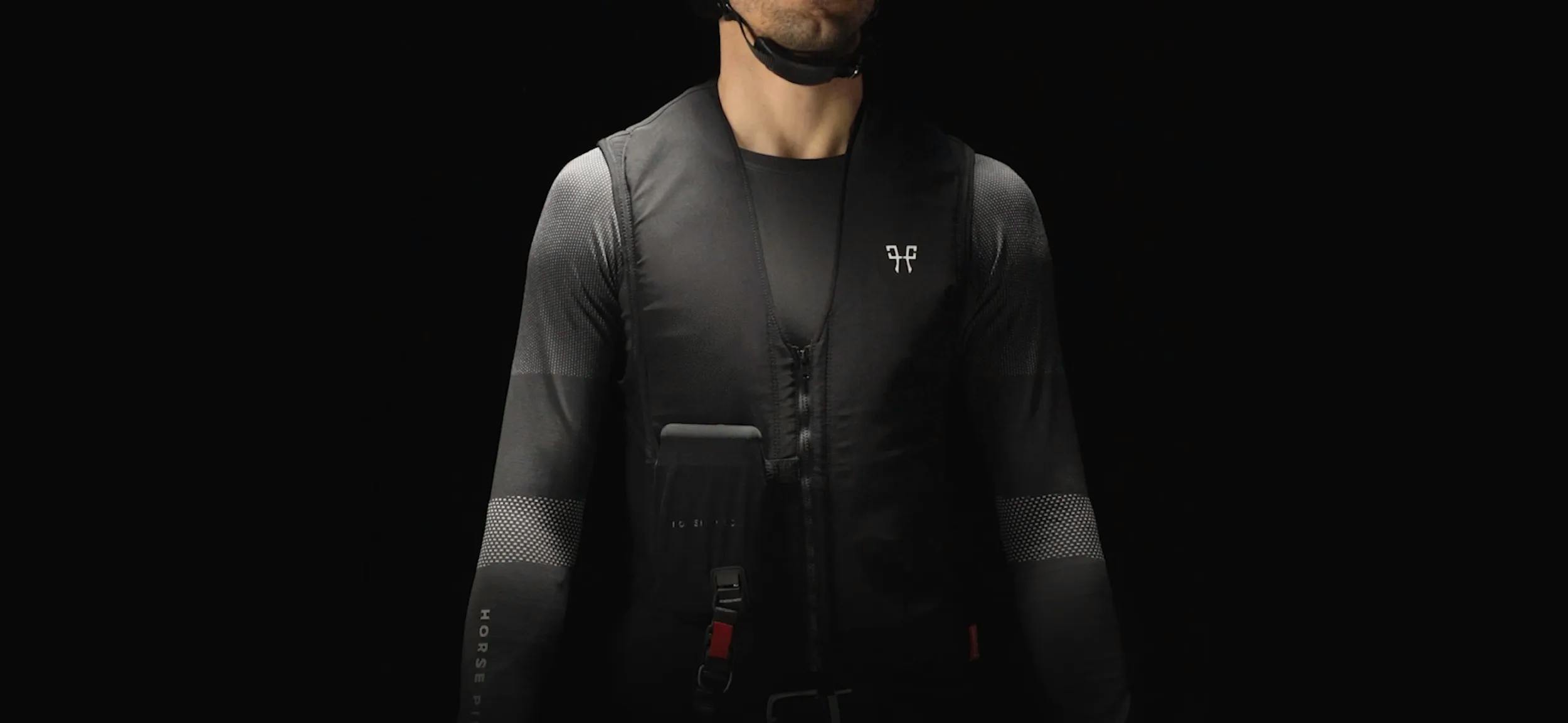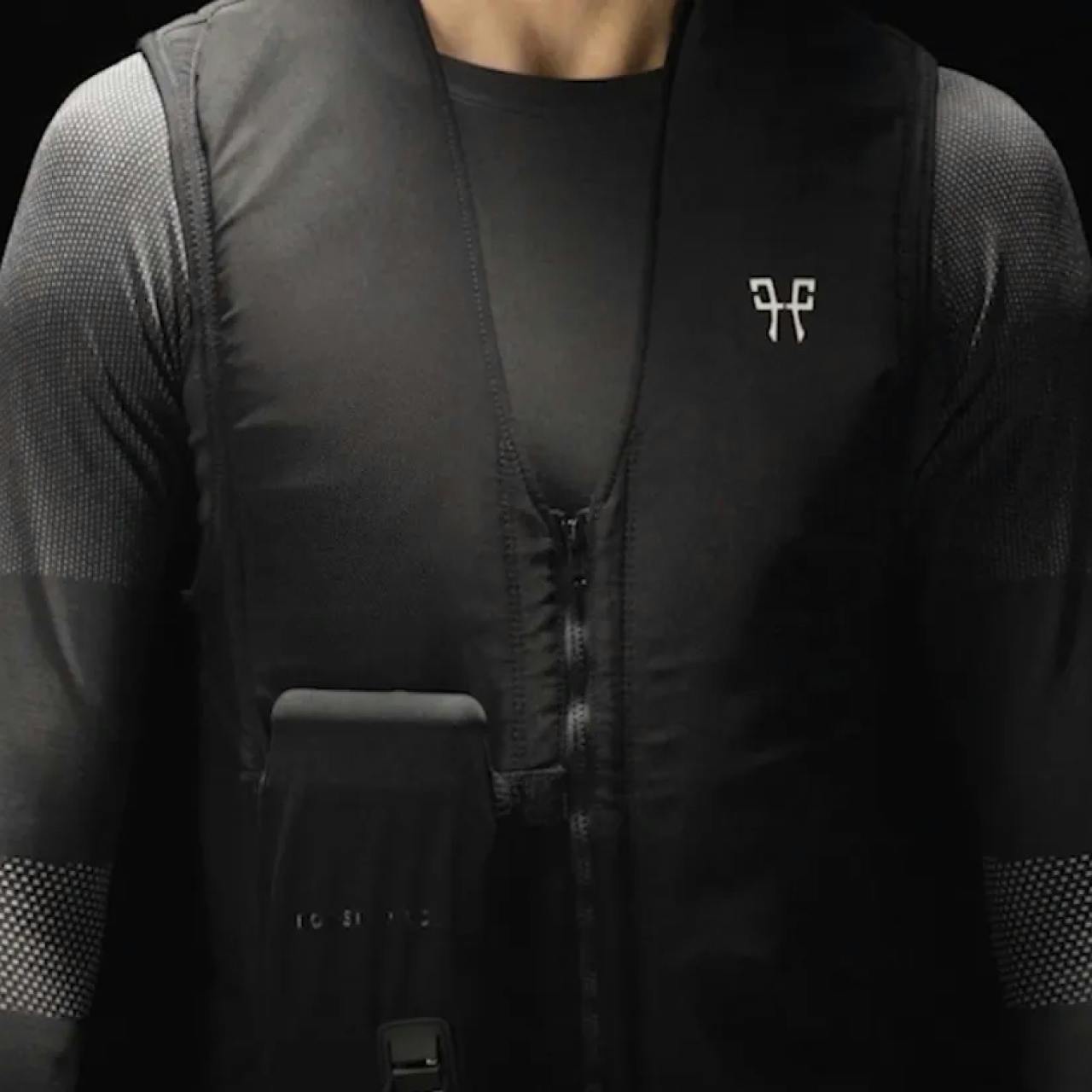Airbag standards
New safety standards for riding airbags

A NEW GENERATION OF AIRBAGS.
When riding, falls are common and safety is a must. Just like head protection, upper body protection should be a priority for every rider. Sometimes restrictive, upper body protection has been improved and airbags have appeared in order to offer more freedom of movement and comfort to riders.
An a will to rethink the airbag vest, Horse Pilot decided to associate with In&motion, specialist of the airbag (airbag integrated in the clothes) and rewarded several times for its innovations. The stake was to propose a powerful solution while bringing advances compared to the existing systems.
For the Twist'Air Airbag, this solution is based on a mechanical airbag system that relies on 2 key elements:
An evolution of the unique, patented gas system: a compact, ergonomic multi-cartridge system.
A specific airbag cushion covering vital areas, which can be worn under an adapted training or competition jacket.
For the E-Twist'Air Airbag, this solution is based on an electronic airbag system that relies on 3 key elements:
Technology capable of anticipating falls before they occur
A specific airbag cushion covering vital areas, which can be worn under an adapted training or competition jacket.
The inflator, a high-performance generator containing high-pressure gas that inflates the airbag to optimum pressure in less than 30ms.
Twist'Air Airbag, a new airbag based on 2 key elements
An evolution of the unique patented gas system and an airbag covering vital areas.

E-Twist'Air Airbag, the new electronic airbag based on 3 key
Technology capable of anticipating falls, an airbag cushion covering vital areas and an inflator that inflates the airbag to optimum pressure in less than 30ms.

NF S72-800:2022 IS THE FIRST AND ONLY STANDARD DEVELOPED FOR EQUESTRIAN AIRBAGS.
Any safety product intended to be marketed in Europe must obtain a CE Certification, issued by a notified body based on existing standards. This certification attests to the product's compliance with the regulations on personal protective equipment. The Airbag Twist'Air is one of the first horse riding airbags to meet the criteria of the NF S72-800:2022 standard, as part of its CE Certification. Aliénor, a subsidiary of CRITT and a notified laboratory, was responsible for carrying out all the tests on the product.
NF S72-800:2022 is the first and only standard developed for equestrian airbags. It is the result of 3 years of work by the French expert committee * of which In&motion is a member and was published in February 2022. Before it, no official standard existed, so the equestrian airbags were certified according to an internal protocol of the notified body giving rise to an "expert opinion" certification.
* The committee was composed of CRITT, engineers, manufacturers, consumer associations and research units.
Any new airbag vest to be certified by a French laboratory will have to meet the criteria of the NF S72-800:2022 standard to obtain CE certification. Currently, a committee of European experts is working on updating the European standard EN 13158, based on the NF S72-800:2022 protocol.
EVALUATION CRITERIA IN CORRELATION WITH HORSE ACCIDENTS.
It is important to have a product standard dedicated to a specific use and practice. For example, the motorcycle airbag standard does not take into account the specifications related to horseback riding. The committee of experts used accident and injury statistics from horseback riders as a basis for designing a series of product tests to assess the protective performance of an airbag intended for equestrian use.
Coverage areas: thorax, abdomen, back and neck
Evaluation of the triggering energy
Mechanical resistance of the cable system
Shock absorption
Determination of the operating pressure
Restraint device
Ergonomic requirements
"THE MOST SERIOUSLY INJURED RIDERS ARE CSO COMPETITORS WHOSE MOST FREQUENT INJURIES ARE TO THE TORSO."
If we are interested in the frequency of falls from the horse and ultimately of injuries, it is in leisure riding that they are more important. Conversely, if we look at the severity of injuries, show jumping competitors are the most seriously injured, with injuries mainly localized on the chest: rib fractures, clavicle fractures such as hemopneumothorax, lumbar and thoracic injuries.
The location of injuries due to a fall from a horse varies according to the level of injury severity. If we focus on severe injuries (AIS4+), the most affected areas are the thorax (40%), the head (23%) and the spine (23%). Regarding the typology of trauma, the most observed injuries in the chest are rib fractures, vertebral fractures, clavicle fractures and lung injuries.
Aware of all these elements, horse pilot and in&motion work together to innovate daily on efficient, reliable and comfortable protection solutions for horse riders. The aim is to limit the consequences of a fall and keep the pleasure of riding intact.
Discover the Twist'Air Airbag and the E-Twist'Air Airbag.